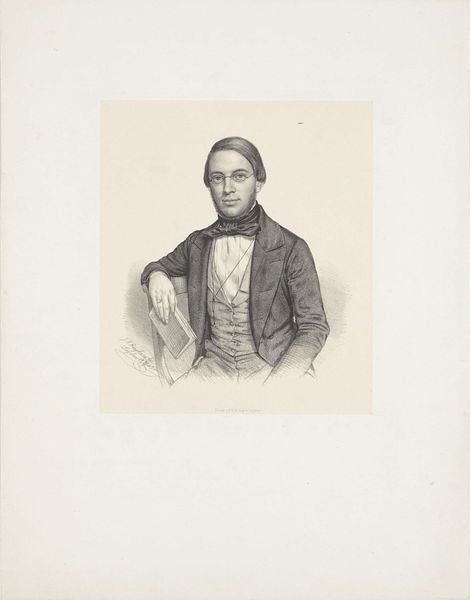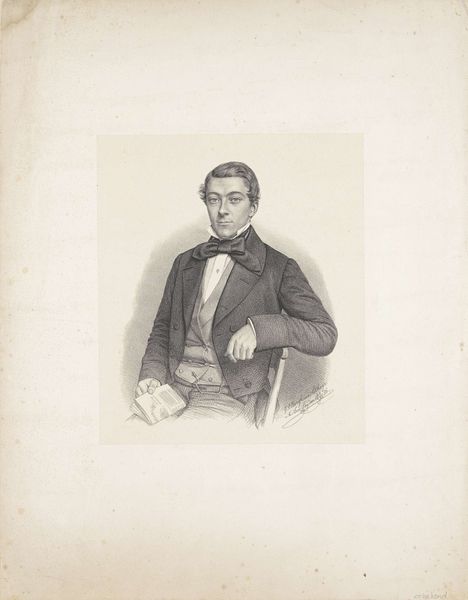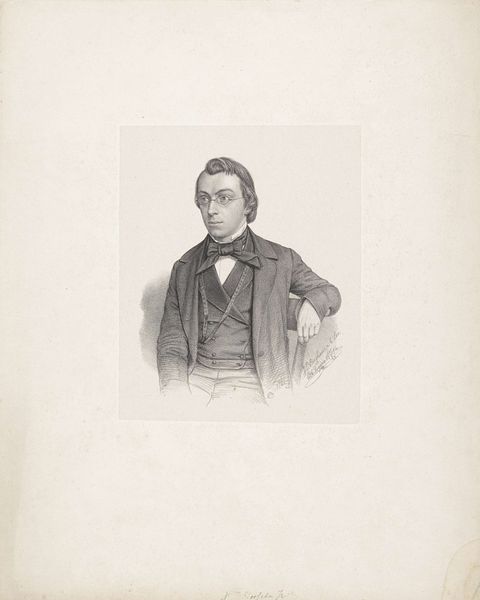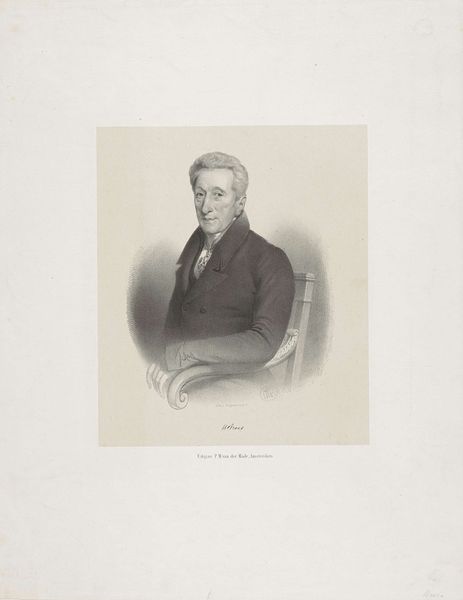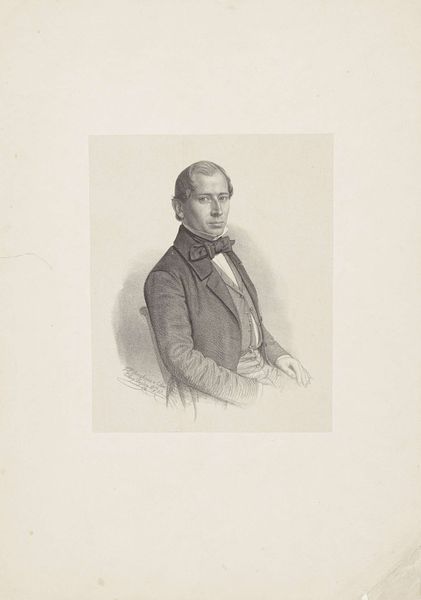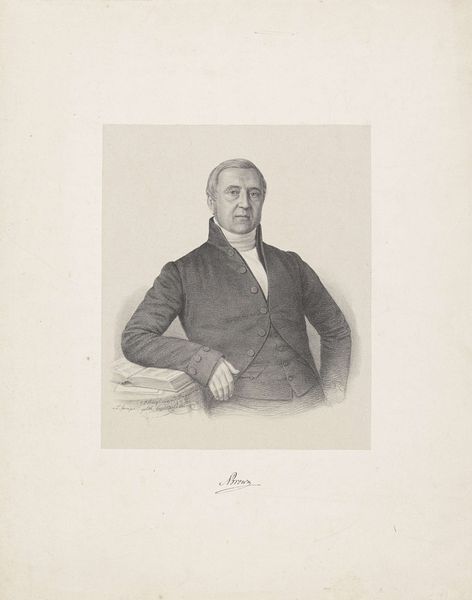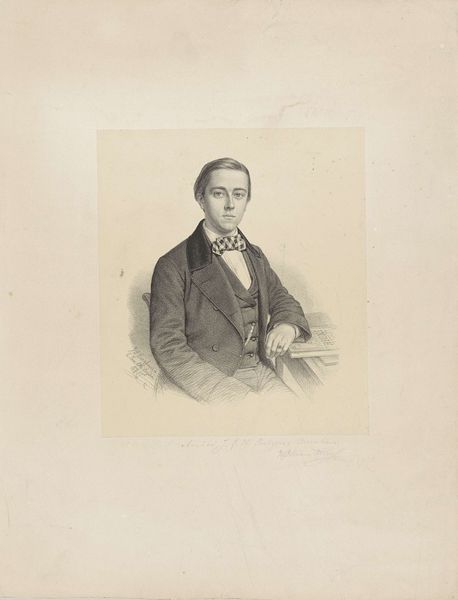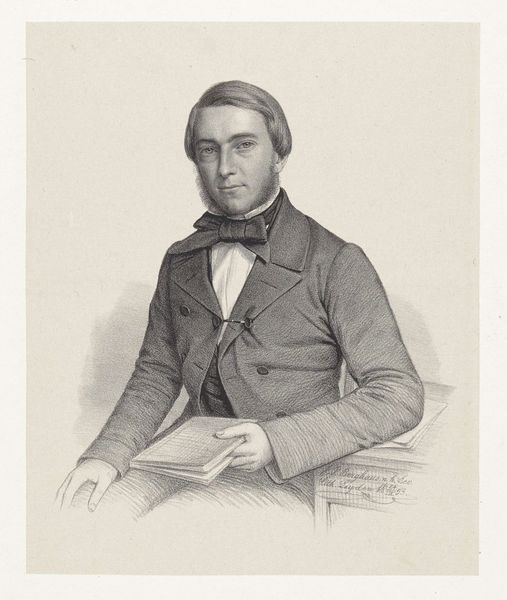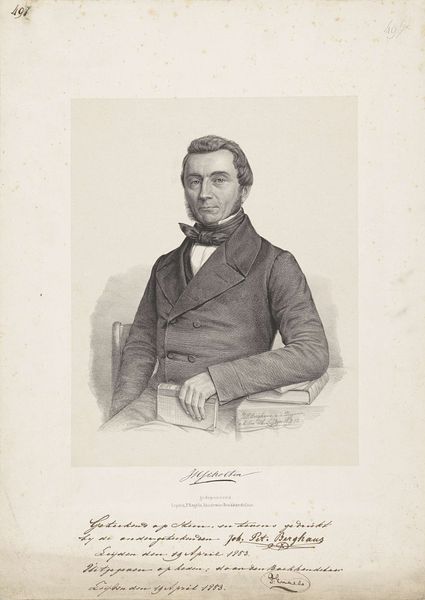
drawing, pencil, graphite
#
portrait
#
drawing
#
pencil drawing
#
pencil
#
graphite
#
academic-art
#
graphite
#
realism
Dimensions: height 367 mm, width 280 mm
Copyright: Rijks Museum: Open Domain
Curator: Here we have "Portret van Cornelius Ekama," a pencil drawing possibly from 1847, currently residing at the Rijksmuseum. The artist is Johann Peter Berghaus. Editor: The first thing that strikes me is the quiet intensity of his gaze. Despite being a relatively simple graphite drawing, the detail in his face and the almost photographic realism, gives it a somber and contemplative feel. Curator: Exactly. Berghaus situates Ekama within a very particular historical moment, one where the rising middle class sought to represent themselves with dignity and seriousness. Consider how dress, posture and even his eyeglasses shape that representation. What does it say about class and intellect? Editor: It also points towards certain performative aspects of bourgeois identity at the time. Think about how the strict conventions of dress – the high collar, the patterned waistcoat – create a certain mask, or a uniform even. The very act of commissioning this type of portrait was likely an active part of cultivating and claiming access to social mobility. Curator: Definitely, this piece functions as a form of social currency in that respect. But I think it also offers a glimpse into how artistic institutions – academies, exhibitions – were then codifying “good” portraiture, helping to solidify the idea of realistic representation. We see so little of the sitter's setting... Editor: Right, there's this fascinating tension between realism and romanticism. The setting almost vanishes entirely, placing Cornelius at the center and elevating the sitter within an almost symbolic or idealized sphere, which I find so interesting. We lose access to the other variables that shaped his personhood. Curator: But isn't it interesting to consider how seemingly straightforward depictions such as these actively contributed to building power structures and artistic canons that continue to affect what we perceive as quality or artistic worth today? Who was included in portraiture at that time? Who was excluded? Why? Editor: That's the point isn't it? Thank you for taking the time to remind us. I think it really speaks to art’s entanglement within its social fabric. It provides more to reflect on than just a mere visual likeness. Curator: Agreed. Looking at Cornelius Ekama here, hopefully gives everyone the necessary questions to bring to any work of art in this era, particularly regarding identity, representation, and power.
Comments
No comments
Be the first to comment and join the conversation on the ultimate creative platform.
